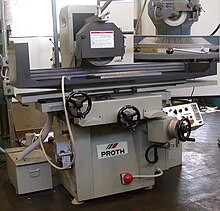Delving into the intricate world of surface grinding, we shed light on the techniques and processes involved in achieving flawless finishes. Surface grinding, a cornerstone of precision machining, is a crucial abrasive process utilized to smooth flat surfaces, imparting a refined finish to metallic and non-metallic materials alike.
In the article “Surface grinding,” we elucidate the fundamental aspects of this abrasive machining process. Employing a rotating abrasive wheel covered in rough particles, known as a grinding wheel, surface grinding meticulously chips away metallic or non-metallic substances from a workpiece, ensuring a flat and smooth surface.
The process involves the use of key components, including an abrasive wheel, a chuck for workholding, and a reciprocating or rotary table. These components work in tandem to hold the material securely in place, enabling precise and controlled grinding operations.
Factors crucial to surface grinding encompass the selection of appropriate grinding wheel materials and considerations regarding the workpiece material. Materials such as cast iron and mild steel are commonly worked upon due to their compatibility with the grinding process.
Emphasizing the importance of meticulous attention to detail and proper material selection in surface grinding operations, we highlight how understanding the nuances of this machining technique enables manufacturers to achieve unparalleled precision and refinement in their finished products.
Click here to learn more about Toolcraft capabilities.
Photo and article with all rights reserved, courtesy wikipedia.org





